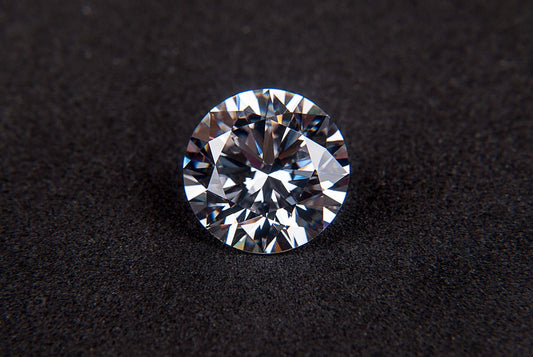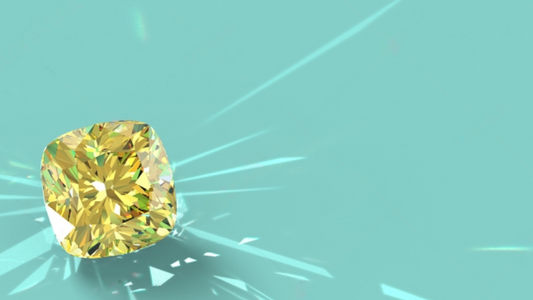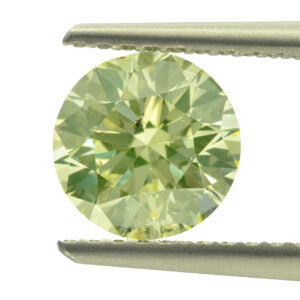What is a Clarity Enhancement?
Clarity enhancement is a term used to describe how the overall appearance of a gemstone changes when it is cut, polished, and treated. Clarity enhancement is achieved by altering the internal structure of the gemstone. These changes can be made by cutting, polishing, or treating the gemstone in some way.
Enhancing the clarity of a gem can substantially improve its appearance and make it more valuable. Clarity can be enhanced in three ways. Treating the gemstone with a chemical solution, applying heat, and altering the structure of the gemstone by cutting it or polishing it. These changes are made on the surface of a gemstone.
Clarity enhancement treatments do not alter the chemical composition of a stone. Heat treatment is a common method of enhancing clarity and lustre in gems, especially diamonds. Heat treatment is when a heated chemical solution is applied to the surface of a gemstone. The heat allows the solutions to penetrate into the gem. Clarity enhancement treatments can often improve a gem's appearance and make it more valuable.
Clarity can be enhanced in three ways: by treating the stone with chemical substance ,heat treatment and irradiation.
Heat treatments are the most common and safest way to improve the clarity of gems. The chemical substance used to enhance clarity is often a diamond solvent called DiI 3 (also known as dilute nitric acid). This chemical agent can be applied in liquid form or as a gas. In either case, it reacts with the carbon in the crystal structure to migrate to other areas of the crystal, thereby increasing their translucency.
Diamond is a crystalline material composed of pure carbon atoms bonded together in an orderly fashion. The orderliness is disrupted when a diamond absorbs liquid or gas.

Stunning emerald ring
What's the Most Effective Emerald Enhancement Technique?
Emerald enhancement is a technique used to improve the colour of a gemstone. There are many ways to enhance gems, and the most common method is by using heat.
This paper will discuss how heat is the most effective way to enhance emeralds, followed by other methods such as irradiation and chemical treatment. We will also discuss some of the advantages and disadvantages of each method.
The most effective emerald enhancement technique is heating. This method has increased in popularity due to its speed and efficiency in enhancing gems with little or no damage to their structure. It's also cost-effective as it can be done at home without requiring any equipment or professional help.
Heat Treatment
Emeralds are a type of gemstone that is created when a large, glassy crystal is formed, and then heat treatment is applied. The heat treatment process converts the green to a blue colour for most emeralds, and it also creates more desirable qualities such as clarity and saturation. This process can be performed in an emerald's natural environment or in a lab setting.
Heat treatment is a process that is used to change the colour and other properties of gemstones,s such as emeralds. Heat treatment can be a destructive process, so it's important to understand the risks involved.
Chemical Substance
Gemstones are amazing, but they can be difficult to see through. That's because fine particles of the gemstone might interfere with the clarity. In order to increase the clarity of gemstones, certain chemical substances can be used to bring out the best colours and shine.
All types of gemstones can do this, but the most common are diamonds and emeralds. If you're looking to increase the clarity of a diamond or emerald, there are a few different ways to do this.
One way is by adding ammonia (NH3) gas or nitric acid (HNO3) solution directly into the stone. This can be done with a small syringe, but you should use care when handling these chemicals as they are highly toxic.
Another way is to add a small amount of hydrofluoric acid (HF) solution into the stone. This will heat up the stone and make it easier to see through, but it also makes the stone more fragile and dangerous.
A third way is to put the stone in a microwave oven and heat it up with a small amount of water. Try these methods on a small piece of the stone first before trying them on your entire project.
Irradiation
The irradiation process is used to enhance the clarity and brilliance of the emerald by adding hydrogen atoms and electrons to the surface of the emerald crystal.
In the process of irradiation (irradiation is the exposure of a material to ionising radiation to cause the fission of radioactive atoms and release nuclear energy), the emerald is heated and then exposed to a high-energy photon beam. The emerald particles are separated by bombarding them with high-energy photons, nuclei, and electrons.
Why Do Emeralds Receive Clarity Enhancements?
Emeralds are known for their beautiful and unique colour and clarity. These factors are the main reasons why emeralds are considered one of the most expensive gemstones.
Emeralds receive clarity enhancements because they have a high refractive index, which means that they can easily be seen under any lighting conditions. This is because emeralds have a high amount of beryl, which has a higher refractive index than diamonds, which is the next highest refractive index.
Rubies are the next most common gemstone to receive clarity enhancements. This is because of the corundum's high refractive index, which makes rubies relatively easy to see under any lighting condition. Ruby is a gemstone that has been enhanced by heat treatment and, as such, undergoes very few minor changes in reflectivity.

Stunning emerald ring
How To Determine Clarity Enhancement Of Emerald
What Substances Are Used For Emerald Enhancements?
Emeralds are known to have been mined for centuries, but it was only in the late 1800s that scientists began to study them and understand their chemical makeup. The most common substance used for emerald enhancements is beryllium copper.
Emerald enhancements are a popular trend in the jewellery industry. However, many people are not aware of what substances are used for the enhancement process.
Since more than 5,000 years ago, the emerald has been one of the most popular gemstones. It is said to have been discovered by the ancient Egyptians, who used it as a gemstone in their jewellery and amulets.
It is made from beryl and quartz, which can be found in different colours such as green, brown, yellow, blue, and red. The colour of emeralds can range from pale yellow to deep green to dark brown or even black, depending on how they were treated with heat or chemicals before being cut into cabochons (round shapes).
Chemical treatments include heating up emeralds under pressure in a flame or an oven or grinding them with a nitric acid solution for about an hour. The resin of esparto grass is used as one of the most popular treatments. The grass is burnt, which fixes the colour and imparts a distinctive smell. Often, coloured stones are produced by diffusing light through the ground or powdered minerals or gemstones.
The most common process begins by powdering lapis lazuli into fine dust and then adding titanium dioxide to make it blue.
This is then mixed with powdered turquoise to make green and a powdered emerald to purple. The difference in colour is caused by the different absorption and scattering of the three colours.
The most popular and most expensive emerald is a type of corundum called "Diasomous" or "Type II Ruby." However, there are many other substances that can be used as well, such as cobalt or cerium. Emeralds are also sometimes cut into gems.
Hardened vs Unhardened Resins
What is the difference between Hardened vs Unhardened Resins when doing clarity enhancement
The hardness of a resin is determined by its molecular structure. There are two types of resin which are hard and unhardened. Hardened resins are typically used when you need to achieve high clarity. On the other hand, unhardened resins are typically used when you need to achieve a low clarity.
The hardness of a resin is determined by its molecular structure and its specific gravity (see below). Specific gravity is a measure of the density of a liquid or solid, giving an indication of how much mass is dissolved in each unit volume.
Many resins are classified by their density, which ranges from 1.03 to 2.0 grams per millilitre (in the US). The specific gravity of resin ranges from 1.03 to 2.0 grams per millilitre (in the US). Resins with a lower specific gravity tend to provide better results than those with higher specific gravity.
Lower densities tend to provide better results than those with higher densities. Resins with a lower specific gravity tend to provide better results than those with higher specific gravity and typically have the following properties:
• Higher-density resins are more difficult to work with, and it requires more fuel during the reaction, resulting in a longer healing time and higher temperatures.
• Lower-density resins tend to have a slight smell when they first come out of the can, but this fades with time as the liquid evaporates. This is not an exhaustive list!
Liquid Oil vs Liquid Resin Stability
The difference between liquid oil and liquid resin is that the former has a viscosity of fewer than ten centipoises while the latter has a viscosity of more than ten centipoises.
The advantages of using liquid resin include the following:
- Better clarity due to better light transmission
- Better surface finish due to better adhesion properties
- The ability to add pigments in order to achieve different colours
The disadvantages of using liquid resin include the following:
- The more difficult process can result in colour variations on different parts of an object
- More expensive than powder resin
- It is difficult to work with, as it can stick to the airbrush. Many people prefer using powder resin because of its ease of use and low cost.









